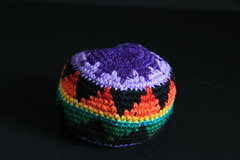Some people stay in one school for years, I taught in an urban school, then in a private school for children with emotional issues, and then in a public school in a small community. Sometimes I taught youngsters with learning disabilities, other times I taught youngsters with behavioral and /or emotional problems. I liked the middle school—those years between twelve and fourteen. My subject—reading and writing. Because I enjoyed teaching poetry I spent some time in mainstream classes—the invited guest to teach a lesson on writing a poem. But I learned the most from my students—
This is the story of Tommy. A breeze, someone’s cough, or the thoughts that lodged in his head—often unwelcome and arriving unannounced distracted him. His family lived in a house that looked as if it harbored hard times. When his mother came to school it was because the school requested she come and even then the invitation had to be extended a number of times. Tommy wore the same gray sweatshirt for three months. “He sleeps in it,” his mother said when the nurse called and asked if it could be washed.
Tommy managed to hang in until March. He was officially in the seventh grade, but over the year the number of mainstream classes he attended dwindled and he spent more and more time in the resource room. The tech ed teacher said that he handled the equipment in a manner that endangered anyone within his arm’s reach. The science teacher said that he faced the back of the room instead of the front.
“I like the chart in the back,” was his response when I asked him why. Art was too unstructured. Music bothered him. And that’s how it went—class after class. Soon we saw Tommy all day.
Most of the other students gave him a wide berth. Why tangle with him when he might hit you or hiss at you.
“You know,” he said during a small group discussion of a book the group had read, “I wish I could break a record. Make it into a record book." We all started to think of how anyone in the group might attain a record. “Perhaps,” I said,” the record can start right here in the resource room.” John decided that he could write one word more times that anyone else. I nixed the word he initially chose and I was named a dictator. Each youngster selected something. Joe said he belched louder than anyone else—which was true, at least in that small group. Tommy said, “I mean something like a sports record.”
We went through the list of sports and nothing suited Tommy. I kept a cache of small items in the closet and I picked up a Guatemalan Hacky Sack Footbag. “Know how to use this?”
I printed up a set of directions and everyone took a turn. At first Tommy only kicked it back and forth three or four times before it hit the floor. He persisted and loved hearing us all count, One, two, three… In a week he kept that hacky-sack going to the count of fifteen. We charted everyone’s accomplishments. By the third week we dubbed Tommy the resource room champion. He earned the time to tackle a new record at the end of each day.
In time Tommy sent that hacky-sack flying from one heel to the other heel in arch like movements. Sometimes he sent the hacky-sack high in the air and twirled around and still got back in enough time to catch it on his heel and send it the other foot.
“I’m going for the school record,” he said. But before he won that record his world fell apart. Tommy spent several weeks in a hospital and never returned to a public school.
He asked for his hacky-sack. "The one I used to set a record."











